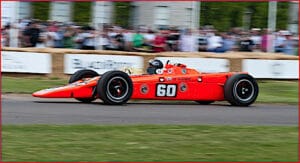
Drive reduction theory is a confusing area, just like any other explanatory notion where, in actual experiential life, the exceptions seem to outnumber the rule. Here is a pretty basic definition:
The purpose of drive reduction is to conserve internal stability (homeostasis). The ability of a system or living organism to adjust its internal environment to maintain a stable equilibrium; such as the ability of warm-blooded animals to maintain a constant temperature. Drive-Reduction Theory works well for simple motivations…
But does it? Does the drive-reduction theory work well for simple motivations? For animals, sure. For humans, not so much. Take the example cited here, maintaining a constant temperature. An animal that is uncomfortably warm in the sun will go into the shade. An animal threatened by fire will, if possible, get into some water.
But humans do this stuff to themselves on purpose. A human will lie around roasting in the sun, anointing itself with potions to keep its skin from cooking, and purposely build up a very uncomfortable degree of overheated discomfort, the better to enjoy an eventual plunge into a pool.
If at all possible, an animal escaping fire or a predator will run away. If the threat closes the distance and seems about to catch up, the animal’s drive to escape and survive will escalate, and it will run even faster. So far, this makes sense.
People get involved, and it all falls apart
Take the most literal drive: driving. Humans go to great trouble and expense to produce machines that go fast for no other purpose than to go fast. There are of course instances where speed is very important — for instance, when a vehicle needs to achieve escape velocity to leave the earth’s gravitational field. And yet people devote their entire lives to, and often sacrifice their lives on behalf of, vehicles that go faster than the average person ever has a need for. This drive is not based on a physiological need, or on any purpose related to the survival of the individual or the species. It is arbitrary and, for practical purposes, useless.
As previously mentioned, the smell of fresh-baked bread stimulates both the starved and the well-fed, and arouses their drive to eat. Huge, very lucrative industries are based on the arbitrary creation of drives and incentives that are artificially cultivated and have nothing to do with the good of the species, and in fact, kill members of the species in huge numbers.
Needs?
The source says, “Drive theory is based on the principle that organisms are born with certain physiological needs…” Coca leaves grow in some geographical areas, and while workers there discovered how to chew the leaves to take the edge off hunger and exhaustion, the chemical was never a physiological need. Neither any individual nor the human species would have died without it.
Before cocaine started being refined, no human had ever been born with an innate need to snort refined cocaine. We synthesize drugs that both create and satisfy our drive to consume them. Somewhat like potato chips, addictive drugs exemplify an industry devoted to the satisfaction of a perceived and deeply felt need that would not have even existed without the stimulus provided by the industry itself.
Your responses and feedback are welcome!
Source: “Drive-Reduction,” InStructure.com, undated
Image by Jake Archibald/CC BY 2.0

 FAQs and Media Requests:
FAQs and Media Requests: 











